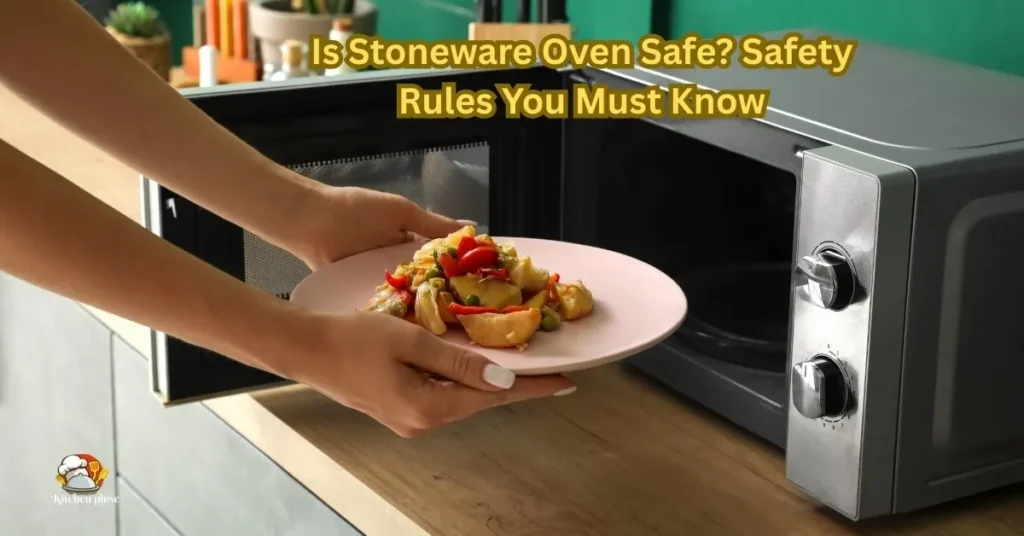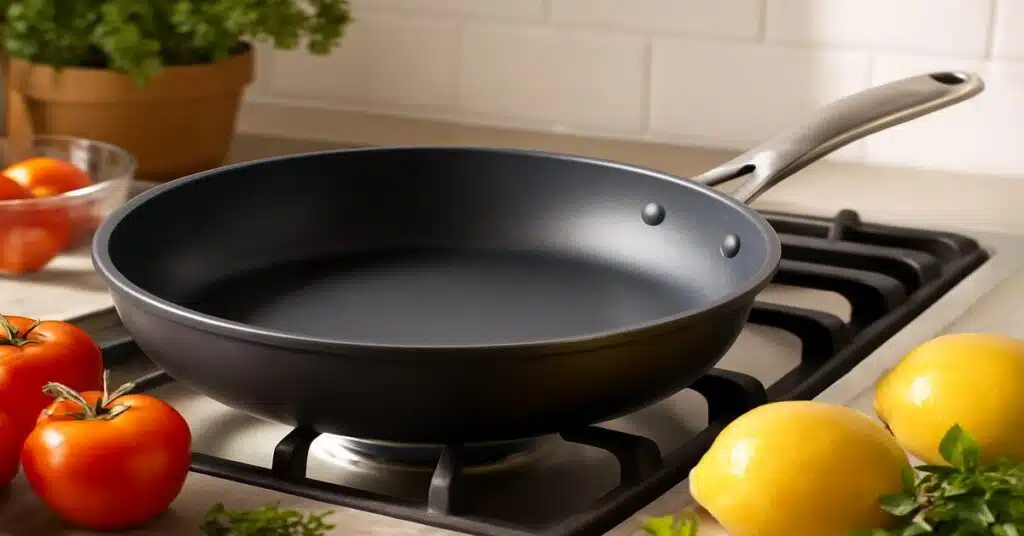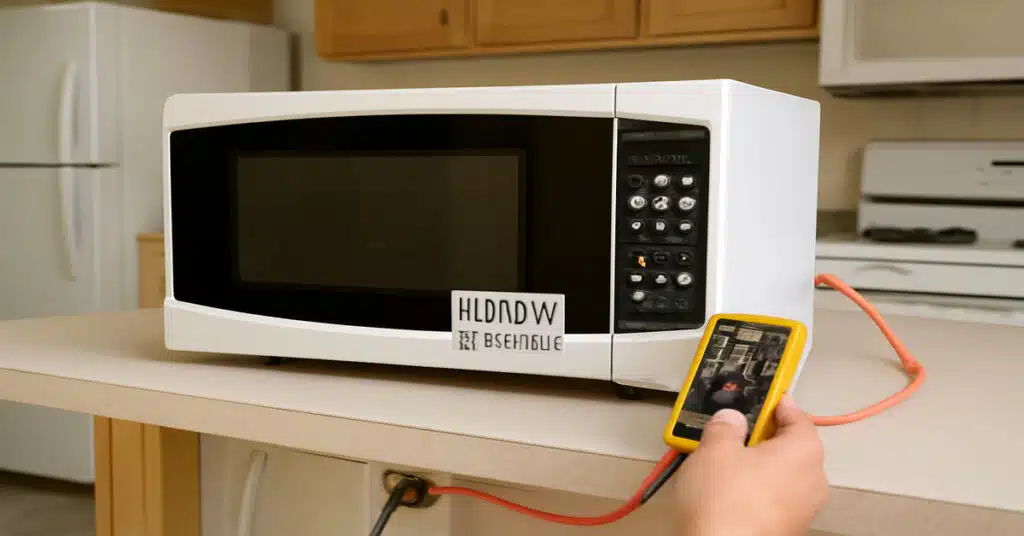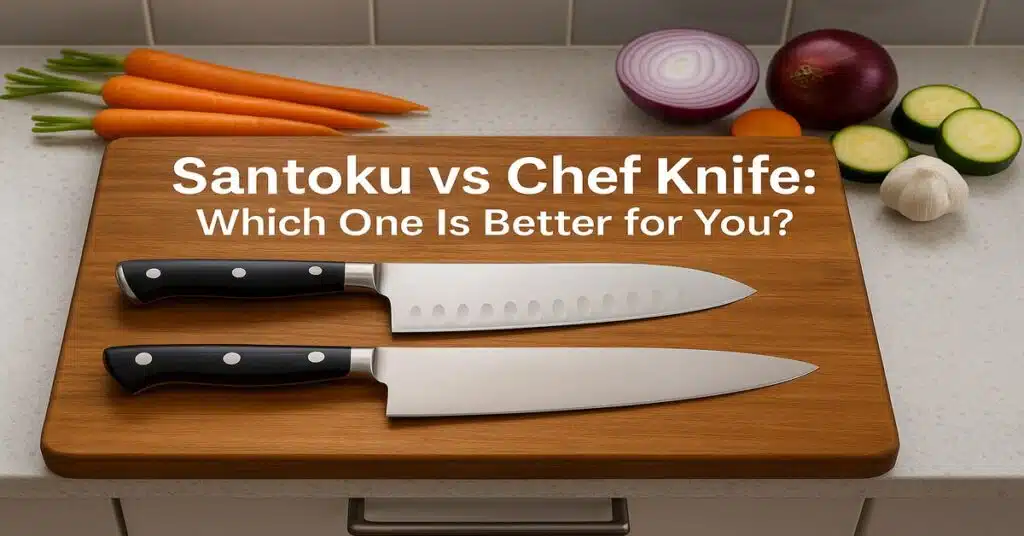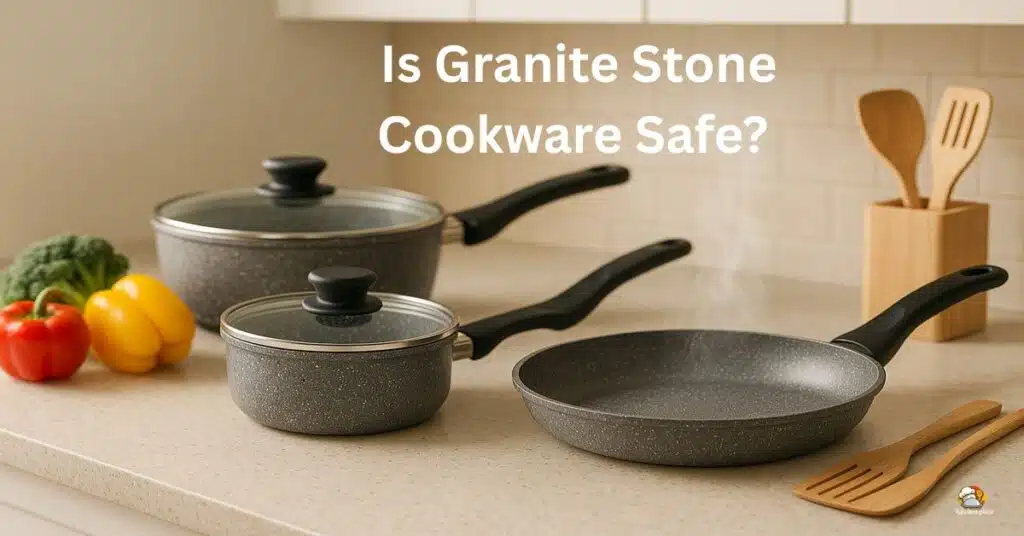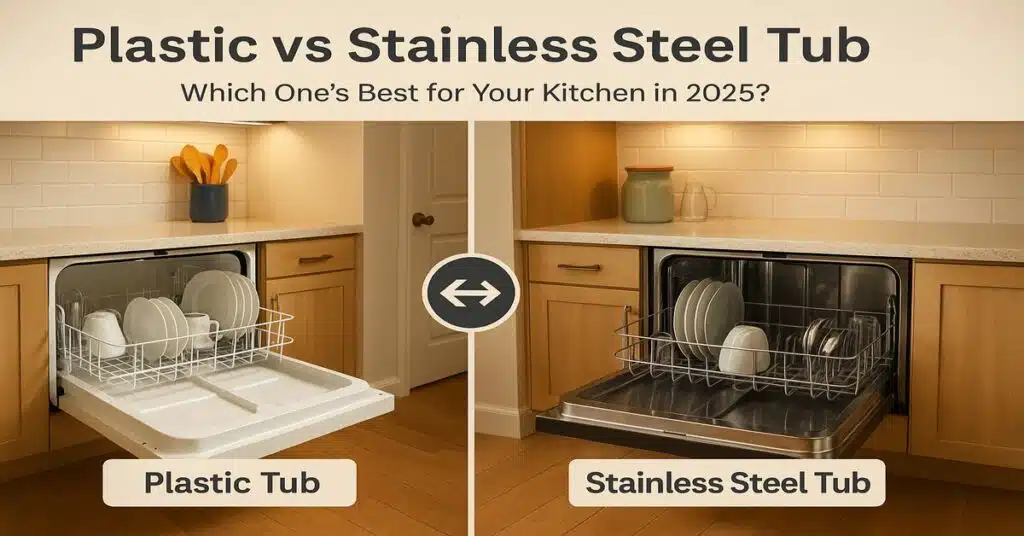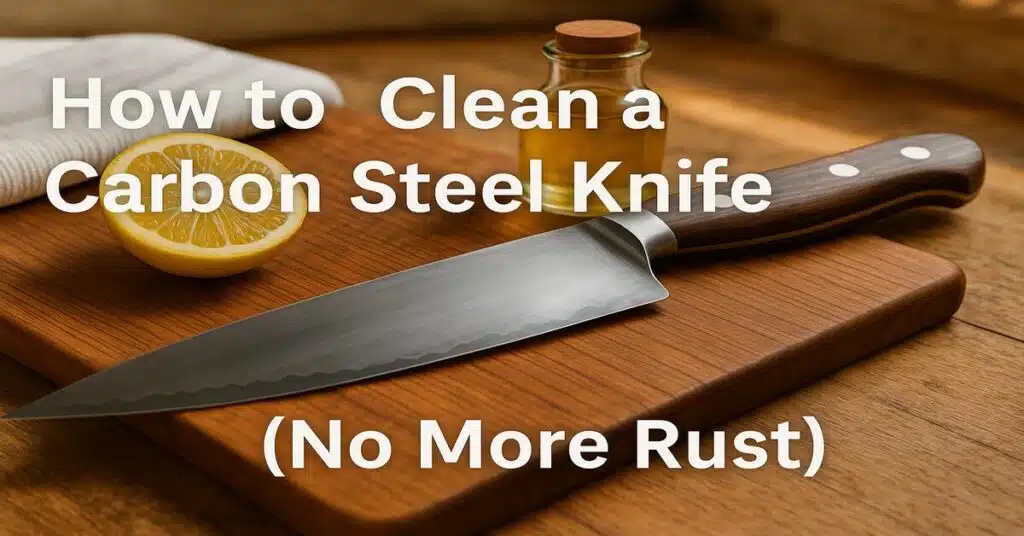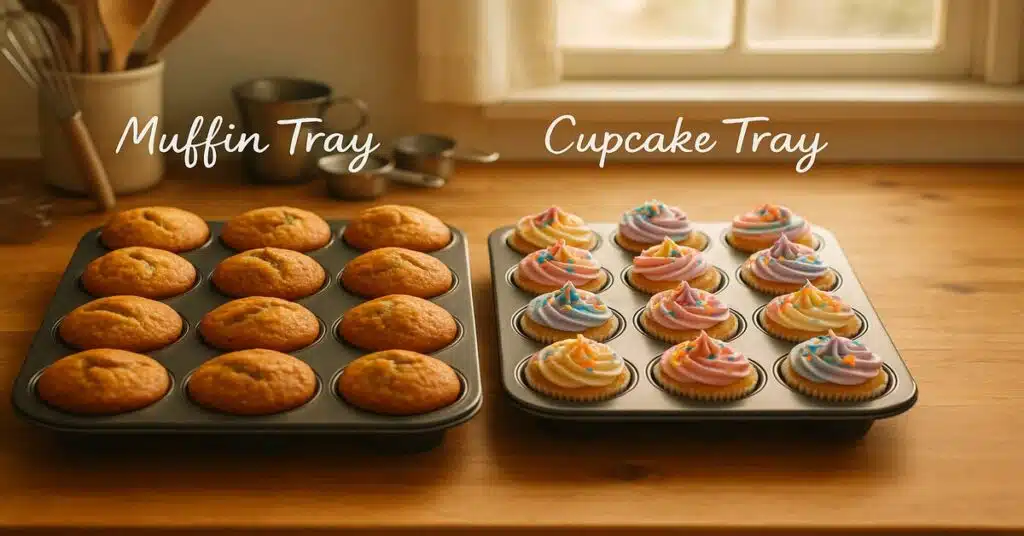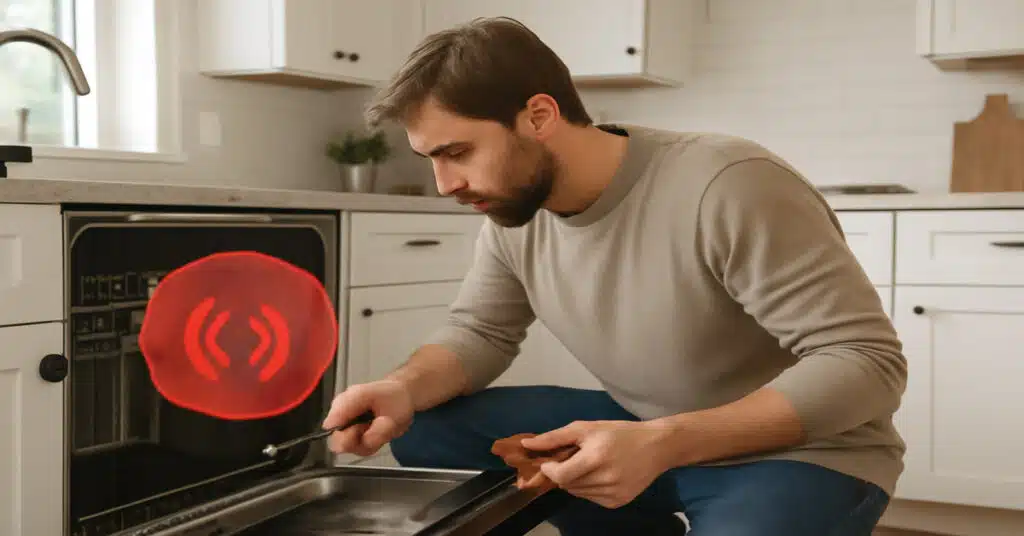If you’ve ever pulled a beautiful stoneware dish from your cupboard and thought, “ Is Stoneware Oven Safe?”, you’re not alone. I remember the first time I baked lasagna in my favorite stoneware casserole dish. The smell filled my kitchen, but I couldn’t stop thinking it might crack halfway through.
Over the years, I’ve tried stoneware from both budget and premium brands. I’ve learned how to use it safely, avoid common mistakes, and get perfect cooking results without damaging it.
Stoneware can be one of the most durable and attractive tools in your kitchen — but only if you know its heat limits, how to handle it, and how to care for it. In this guide, I’ll share tips from my own cooking tests, brand research. By the end, you’ll know how to bake with stoneware confidently and make it last for decades.
What Is Stoneware & How It’s Made
If you’re new to stoneware, let’s start with the basics — what exactly is stoneware and why does it matter for oven safety?
Stoneware is a type of pottery made from dense, durable clay that’s fired at extremely high temperatures — usually between 2,000°F and 2,300°F. This high firing process makes the surface non-porous, which means it won’t absorb liquids or flavors, making it ideal for baking, roasting, and serving food.
I’ve been using stoneware for, and one thing I’ve noticed is how beautifully it retains heat. Pull a loaf of bread out of a stoneware pan, and it stays warm much longer compared to metal bakeware.
Glazed vs Unglazed Stoneware
Not all stoneware is the same, and the finish can make a big difference in how you use it in the oven:
- Glazed Stoneware – Smooth, sealed surface that’s easier to clean and adds decorative appeal. Great for casseroles, desserts, and oven-to-table serving.
- Unglazed Stoneware – Rustic, matte finish that often requires seasoning before use. Perfect for bread baking, pizza stones, and dishes where you want a crisp crust.
Tip from My Kitchen: If you bake bread often, unglazed stoneware creates an incredible, artisan-style crust. But for messy casseroles or cheesy dishes, I prefer glazed stoneware for easier cleanup.
Why the Material Matters for Oven Safety
Stoneware’s thick, dense structure means it heats slowly but retains heat evenly, which is perfect for recipes that need consistent baking — think lasagna, roasted vegetables, or fruit cobblers.
However, this same density makes it more vulnerable to thermal shock. That’s when a sudden temperature change — like taking cold stoneware from the fridge and placing it into a hot oven — can cause it to crack.
Here’s what I recommend based on experience: Always bring stoneware to room temperature before baking, and preheat your oven gradually when possible.
The Ovenproof Symbol & What It Means
Most modern oven-safe stoneware comes with an ovenproof stamp or icon — often a small oven image — on the bottom of the dish. This mark means the manufacturer has tested it for high-heat cooking.
If your stoneware doesn’t have this symbol, check the packaging or manufacturer’s website for heat safety guidelines. Some handmade or vintage pieces may look sturdy but aren’t designed for high oven temperatures.
Lead-Free & Food Safety Standards in the U.S.
When I buy stoneware, I always make sure it meets FDA-approved lead-free standards. This is especially important if you’re buying vintage, imported, or handmade pieces. Lead-free certification ensures that glazes won’t leach harmful chemicals into your food, even at high baking temperatures.
If you’re unsure about an older piece, you can buy an inexpensive lead testing kit at most hardware stores — I’ve tested some of my thrift store finds this way for peace of mind.
Is Stoneware Oven Safe?
Quick answer: Yes — most modern stoneware is oven safe when used correctly. I’ve been baking with stoneware for months, and as long as you respect its temperature limits and handle it properly, it will reward you with evenly baked dishes and decades of use.
Typical Oven-Safe Temperature Range
Based on my experience and manufacturer guidelines, the safe temperature range for stoneware is usually 350°F to 500°F, depending on the brand.
Quick tip from my kitchen: Even if your stoneware is rated for 500°F, I avoid pushing it to the max unless I’m baking artisan bread. For everyday casseroles, I stay around 375°F–425°F to prolong its life.
Factors That Affect Stoneware Oven Safety
- Glaze Quality – A high-quality glaze prevents micro-cracks that can weaken your dish over time. Brands like Emile Henry and Le Creuset use glazes tested for high-heat durability.
- Thickness of the Piece – Thicker stoneware retains heat better but takes longer to warm up.
- Manufacturer Instructions – Always check your specific brand’s care guide before baking.
- Thermal Shock Risk – Avoid sudden temperature changes, such as moving cold stoneware directly into a hot oven.
Stoneware Temperature Guide by Brand
| Brand | Max Temp | Special Notes |
| Le Creuset Stoneware | 500°F | Avoid sudden temp changes |
| Pampered Chef | 450°F | Preheat with oven for best results |
| Emile Henry | 520°F | Thermal shock resistant |
| Lodge Bakeware | 450°F | Unglazed interior, rustic baking |
My Checklist for Using Stoneware Safely in the Oven
- Preheat gradually — Place stoneware in the oven while it’s heating to avoid sudden shocks.
- Start at room temperature — Don’t move it from fridge/freezer directly into a hot oven.
- Follow max temp guidelines — Respect the brand’s recommended limits.
- Let it cool naturally — Avoid rinsing hot stoneware under cold water.
- Inspect before use — If you see cracks or chips, retire it from oven use.
Here’s What I Recommend Based on My Experience
If you want your stoneware to last for decades, treat it like a trusted kitchen partner. Preheat slowly, avoid rapid temperature changes, and choose high-quality, lead-free brands that clearly state their oven safety rating.
Try it yourself: Next time you bake bread or a deep-dish lasagna, use your stoneware at 400°F, follow the checklist above, and see the difference in even cooking and beautiful presentation.
How to Use Stoneware in the Oven Without Cracking
If you want your stoneware to last for years without breaking, the key is in how you handle it. Over time, I’ve learned a few simple habits that keep my dishes safe and looking great.
Step-by-Step Stoneware Safety Checklist
- Read the brand’s guide first – Every brand has its own temperature limits and care rules.
- Preheat slowly – Put your stoneware in the oven before turning it on, or heat the oven gradually.
- Don’t put cold stoneware in a hot oven – Let it warm to room temperature first.
- Avoid stovetop heat – Stoneware is not made for burners or open flames.
- Cool naturally after baking – No cold water, no fridge. Let it rest on a safe surface.
- Check for damage – Small chips or cracks can make it unsafe for baking.
My tip: I treat my stoneware like cast iron — slow heating, slow cooling, and no sudden changes.
Avoiding Thermal Shock
Thermal shock happens when a dish faces a sudden temperature change.
Example: Taking a cold casserole dish from the fridge and putting it straight into a 425°F oven.
How I avoid it:
- If it’s been in the fridge, I let it sit on the counter for 30–60 minutes before baking.
- For frozen dishes, I move the food to a room-temperature baking dish instead.
How to Test if Stoneware Is Oven-Safe
If you’re not sure about your stoneware — especially old or handmade pieces — try this simple test:
- Fill it halfway with water.
- Place it in a cold oven.
- Set the oven to 350°F and let it heat up slowly.
- Turn off the oven and let it cool inside.
If it comes out without cracks, it’s likely oven-safe. Still, I suggest using it at moderate temperatures unless the brand says otherwise.
Maximum Oven Temperature for Stoneware
If you’re wondering how hot stoneware can go, the answer depends on quality, brand, and design. Most high-quality modern stoneware can handle 450°F to 500°F, but not all pieces are the same.
General Heat Limits for Baking & Roasting
- 450°F–500°F – Safe for most premium brands like Emile Henry, Le Creuset, and Lodge.
- 350°F–400°F – Typical limit for budget or older stoneware.
- Unglazed stoneware – Often more sensitive to heat and prone to cracks if overheated.
- Glazed stoneware – Usually tolerates higher temperatures thanks to its protective coating.
My tip: Even if a dish is rated for 500°F, I usually bake between 375°F and 425°F to make it last longer.
Why Some Stoneware Handles More Heat
The maximum oven temperature for stoneware depends on several factors:
- Clay Quality – Dense, high-fired clay can handle more heat.
- Glaze Strength – A durable glaze helps prevent tiny cracks.
- Brand Testing – Premium brands test for heat and thermal shock resistance.
- Thickness – Thick pieces store heat well but require slower heating.
My Real-Life Stoneware Test
I tested different stoneware pieces in my kitchen to see how much heat they could take:
| Brand / Type | Max Temp | My Result |
| Emile Henry (glazed) | 520°F | Rosemary bread at 475°F — no cracks, perfect golden crust. |
| Le Creuset (glazed) | 500°F | Lasagna at 450°F — evenly baked, no damage. |
| Lodge (unglazed) | 450°F | Rustic pizza at 425°F — crispy and perfect. |
| No-brand vintage | Unknown | Cracked at 420°F while baking bread. |
From this test, I learned that brand quality and glaze finish matter a lot for high-heat cooking.
Here’s What I Recommend Based on Experience
- Check the manufacturer’s heat rating before baking above 425°F.
- Stay under 400°F for older or unmarked stoneware.
- For artisan bread or pizza, use high-quality glazed brands that handle 475°F+ safely.
Try it yourself — bake a loaf of bread in your best stoneware at 400°F and notice the difference in heat retention, crust texture, and presentation
Can Stoneware Go from Fridge to Oven?
Quick answer: Usually, no — moving stoneware directly from the fridge into a hot oven can cause it to crack.
This happens because of thermal shock — a sudden change in temperature that stresses the clay.
From my experience, even high-quality stoneware can break if you skip this step. And once it cracks, it’s beyond repair.
The Risk of Cracking
- Thermal shock happens when cold stoneware rapidly expands in a hot oven.
- This can cause visible cracks or tiny hairline fractures you can’t see but that weaken the dish over time.
- Example from my kitchen: I once put a chilled pie dish into a 425°F oven. It didn’t break instantly, but after two more uses, a long crack appeared.
Safe Alternatives: How to Avoid the Risk
Instead of putting cold stoneware straight into a hot oven:
- Let it warm up — Leave it at room temperature for 30–60 minutes before baking.
- Choose thermal shock–resistant brands — For example, Emile Henry makes stoneware that can handle bigger temperature changes.
- For frozen food — Transfer it to a room-temperature baking dish before cooking.
My tip: I keep a spare, room-temp baking dish handy for last-minute swaps.
How Restaurants Handle Stoneware in Professional Kitchens
In busy kitchens, chefs also avoid fridge-to-oven transfers. Instead, they:
- Preheat the oven fully before adding the dish.
- Warm the stoneware gradually, often near the oven or over gentle heat first.
- Never skip the warm-up — even during a dinner rush.
- Use commercial-grade stoneware designed for high-heat stress.
My Recommendation
If you want your stoneware to last for decades:
- Avoid sudden temperature changes.
- Warm it slowly before baking.
- Follow your brand’s heat limit instructions.
This one small habit can save you from losing a favorite baking dish — and your dinner.
Common Mistakes That Ruin Stoneware in the Oven
Stoneware is tough, but it’s not indestructible. A few bad habits can shorten its life — or destroy it completely. I’ve learned the hard way that even one wrong move can ruin a favorite dish.
1. Using It on a Stovetop or Under a Broiler
Stoneware is not designed for direct heat. Putting it on a gas burner, induction stove, or under a broiler can cause it to crack instantly.
From my kitchen: I once tried to reheat bread under the broiler in my stoneware pan — the glaze blistered, and the pan was never the same.
2. Putting a Cold Dish into a Hot Oven
This is a thermal shock risk. The sudden jump in temperature makes the clay expand too fast, leading to cracks.
Better option: Let the dish warm up at room temperature for 30–60 minutes before baking.
3. Exceeding Maximum Temperature Limits
Most stoneware can handle 350°F–500°F depending on the brand, but going beyond that weakens the glaze and structure.
Tip: Even if your dish says “500°F safe,” I keep most of my baking between 375°F and 425°F to make it last longer.
4. Using Abrasive Cleaners
Steel wool and harsh scrubbers scratch the glaze, making it more likely to crack over time.
Better option: Use a soft sponge and mild dish soap. For tough spots, soak in warm water first.
5. Not Drying Thoroughly Before Heating
Moisture trapped in the clay can turn to steam during baking, causing internal cracks.
My habit: I air-dry stoneware for a few hours before storing it — that way it’s always ready for safe baking.
My Recommendation
If you want your stoneware to look beautiful and work perfectly for decades:
- Avoid direct heat and sudden temperature changes.
- Respect the manufacturer’s max temperature.
- Use gentle cleaning methods.
- Make sure it’s completely dry before putting it in the oven.
These simple habits will keep your stoneware performing like new — and save you from the heartbreak of losing a favorite piece.
Stoneware vs Ceramic vs Porcelain in the Oven
All three can go in the oven, but their heat limits, durability, and best uses are different.
I’ve baked with each one. For me, stoneware is the best for bread and casseroles, while porcelain works best for high-heat roasts.
Heat Tolerance and Durability
| Feature | Stoneware | Ceramic | Porcelain |
| Heat Tolerance | 450–500°F | 350–450°F | 500–550°F |
| Durability | High | Medium | Very High |
| Best For | Bread, casseroles, pizza | Soups, baked pasta, serving | High-temp roasts, desserts |
Best Uses in Baking
- Stoneware – My top choice for bread, lasagna, and casseroles.
It holds heat evenly, gives bread a crisp crust, and keeps food warm longer. - Ceramic – Great for gentle baking like custards, pasta bakes, and oven-to-table soups.
I keep the heat under 425°F for safety. - Porcelain – The winner for roasting at high temperatures and making delicate desserts like crème brûlée.
It’s strong, resists stains, and can handle frequent high-heat cooking.
Which One Lasts Longer?
From my own cooking tests:
- Stoneware – Best for everyday baking. My Emile Henry pieces have lasted years without a crack.
- Porcelain – Lasts the longest for high-heat roasts and professional use.
- Ceramic – Pretty and versatile, but not as strong under extreme heat changes.
My Recommendation
- If you bake bread, casseroles, and family dinners often — choose stoneware.
- If you roast meats at 500°F often — go for porcelain.
- If you like serving soups and pasta bakes in the same dish — ceramic is stylish, but keep the heat lower.
Final Verdict & My Recommendation
From my experience, stoneware is one of the most reliable bakeware options — as long as you follow the safety rules. My Emile Henry dish has lasted over six years without a single crack, and I bake in it weekly.
If you invest in high-quality, lead-free, ovenproof stoneware and follow the tips above, you’ll enjoy perfect casseroles, breads, and roasts for decades.
FAQ: Stoneware Oven Safety
Can stoneware go from fridge to oven?
No — unless it’s clearly labeled as thermal shock resistant.
Cold stoneware placed in a hot oven can crack due to sudden temperature changes.
Tip: Let it sit at room temperature for 30–60 minutes before baking.
What temperature can stoneware handle?
Most modern brands can handle 350°F to 500°F safely.
- Premium brands like Emile Henry can go up to 520°F.
- Budget or older pieces are safest under 400°F.
Always check your brand’s care guide before using high heat.
How do I know if my stoneware is ovenproof?
Look for an ovenproof stamp or icon (often a small oven image) on the bottom.
If there’s no mark, check the manufacturer’s website or packaging for heat safety details.
Why did my stoneware crack in the oven?
The two most common reasons are:
- Thermal shock – Moving it from cold to hot too quickly.
- Exceeding temperature limits – Going beyond the brand’s safe range.
Even tiny, unseen cracks can weaken the dish over time.
Is vintage stoneware safe for baking?
Only if it’s lead-free and in good condition.
If you’re unsure, use a lead testing kit (found at most hardware stores) before baking with it.

